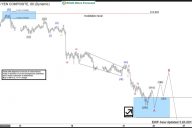Written by Richard Turnill
The U.S. commercial real estate recovery is in its eighth year, but we believe it still has room to run amid reflation, competitive rental yields and potential for operating income growth. This week’s chart helps explain why.

Resilient rental income has helped support U.S. real estate returns during past rate-hiking cycles, especially during more gradual ones like today’s. See the green bars in the chart above. And commercial properties are typically able to raise rents in reflationary periods, albeit often with a lag, providing some inflation protection.
Reasons for real estate
U.S. commercial property prices have returned to 2008 peak levels, yet we see key differences with the debt-driven previous cycle that ended in a bust. Real estate development activity is lower and credit access is tighter. Valuations, measured by the ratio of operating income to property values versus 10-year U.S. Treasuries, are around the 20-year average.
We see U.S. commercial real estate delivering attractive total returns over the next few years in a low-return world. We expect capital appreciation to slow but see operating income growth due to the reflationary backdrop and the potential for property managers to add value by upgrading buildings. Demand is strong: Nearly half of institutions in our most recent Global Institutional Rebalancing Survey intended to raise allocations to real estate this year.
We favor industrial and office properties that should benefit from reflation. We are neutral on apartments due to elevated supply and avoid retail properties due to e-commerce competition. We like selected publicly traded U.S. real estate investment trusts and commercial mortgage-backed securities.











No Comments